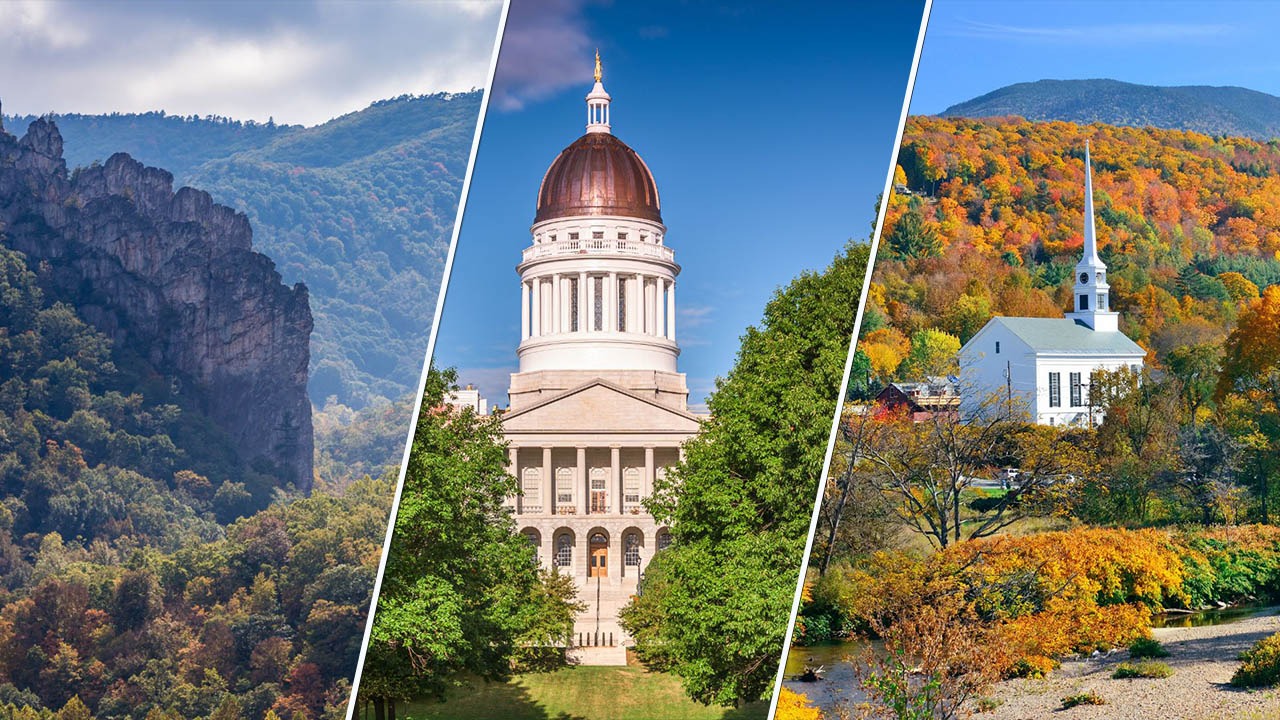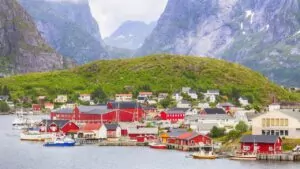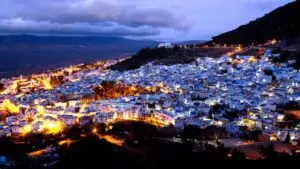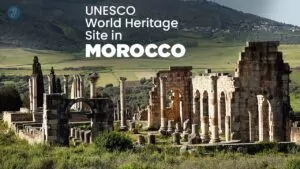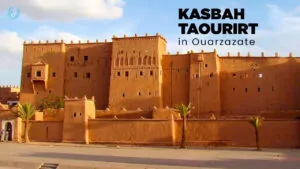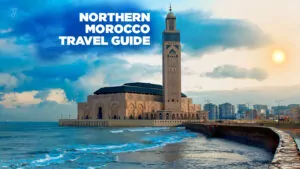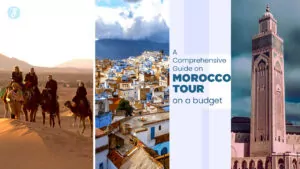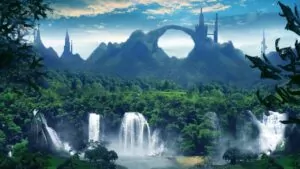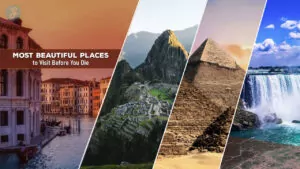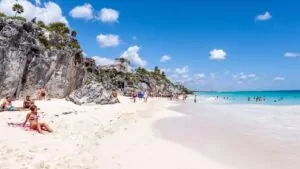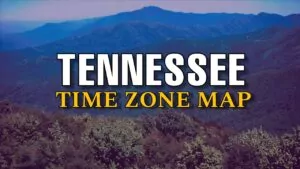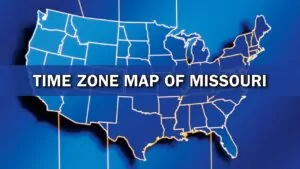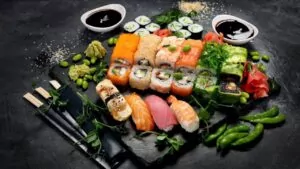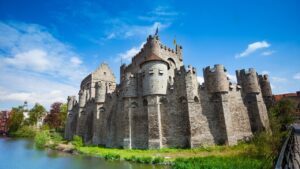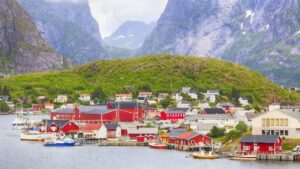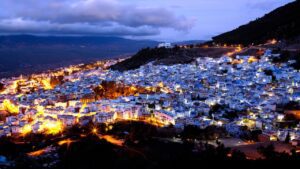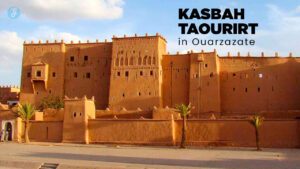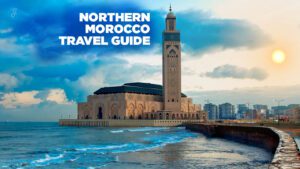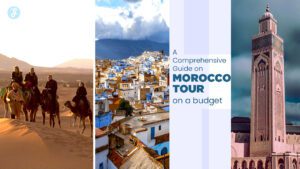When most people think of traveling in the United States, popular destinations like California, New York, or Florida often come to mind. However, America is a vast country with 50 diverse states, each offering unique experiences for visitors.
This guide aims to shine a light on seven lesser known US states that deserve more attention from travelers. Tourists often overlook these hidden gems, which boast natural wonders, rich history, vibrant cultures, and unforgettable experiences.
So pack your bags, grab your map, and get ready to discover some of America’s best-kept secrets. Explore these seven states, offering adventures that will create lasting memories and deepen your appreciation for the diversity of the United States.
1. Maine: The Pine Tree State
Nestled in the northeastern corner of the United States, Maine is a state of rugged beauty and charming coastal towns. Known for its rocky shoreline, rolling mountains, and dense forests, Maine offers a perfect blend of outdoor adventures and quaint New England charm.
Key Attractions
- Acadia National Park: This crown jewel of Maine’s natural attractions covers 47,000 acres of breathtaking coastal and mountain landscapes. Visitors can hike granite peaks, bike historic carriage roads, or simply soak in the stunning views of the Atlantic Ocean.
- Portland: Maine’s largest city, is a vibrant hub of culture, history, and culinary delights. The Old Port district, with its cobblestone streets and 19th-century brick buildings, is home to boutique shops, art galleries, and some of the best seafood restaurants in the Northeast.
- Lighthouses: Maine’s coastline is dotted with more than 60 historic lighthouses. The Portland Head Light in Cape Elizabeth, commissioned by George Washington, is one of the most photographed lighthouses in the world.
- Baxter State Park: Home to Mount Katahdin, the northern terminus of the Appalachian Trail, this wilderness area offers rugged hiking, camping, and wildlife viewing opportunities.
Natural Wonders and Outdoor Activities
Maine’s diverse landscape provides endless opportunities for outdoor enthusiasts.
- Hiking: From simple nature walks to challenging mountain trails, Maine has over 2,000 miles of hiking paths.
- Kayaking and Canoeing: Explore Maine’s 3,500 miles of coastline or its numerous lakes and rivers.
- Skiing: In winter, resorts like Sugarloaf and Sunday River offer world-class skiing.
- Wildlife watching: Spot moose, black bears, and a variety of bird species in Maine’s forests and wetlands.
Cultural Experiences and Local Cuisine
Maine’s culture is deeply rooted in its maritime heritage and rural traditions:
- Maine Lobster Festivals: Towns like Rockland host annual festivals celebrating the state’s most famous culinary export.
- Native American Heritage: Visit the Abbe Museum in Bar Harbor to learn about the Wabanaki people’s history and culture.
- Arts Scene: Explore the vibrant arts communities in towns like Ogunquit and Rockport.
Maine’s cuisine is famous for its seafood, particularly lobster. Don’t miss trying:
- Lobster rolls
- Clam chowder
- Wild blueberry pie (Maine is the world’s largest producer of wild blueberries.)
- Whoopie pies are the official state treat.
Best Times to Visit and Travel Tips
- Summer (June to August) is peak tourist season, offering warm weather and numerous festivals.
- Fall (September to October) provides spectacular foliage and fewer crowds.
- Winter (December to March) is ideal for skiing and winter sports enthusiasts.
- Spring (April to May) offers mild weather and the chance to see wildflowers in bloom.
Travel Tips:
- Rent a car to explore the state’s scenic byways and remote areas.
- Book accommodations in advance, especially during peak season.
- Pack layers, as weather can change quickly, particularly along the coast.
Hidden Gems
- Monhegan Island: A small, rocky island 10 miles off the coast, known for its artist colony and hiking trails.
- Rangeley Lakes Region: A lesser-known area offering pristine lakes, mountains, and excellent opportunities for fishing and boating.
- The Bold Coast: A 30-mile stretch of rugged coastline in northeast Maine, perfect for those seeking solitude and unspoiled natural beauty.
2. Vermont: The Green Mountain State
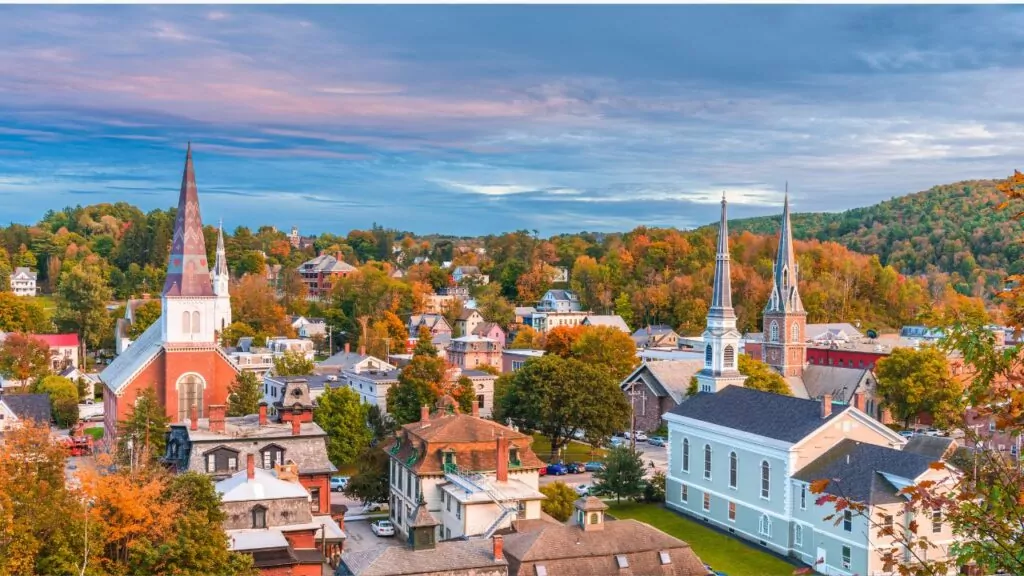
Vermont, with its picturesque landscapes of rolling green hills, quaint villages, and covered bridges, offers a quintessential New England experience. Known for its commitment to sustainable living, farm-to-table cuisine, and outdoor recreation, Vermont provides a refreshing escape from the hustle and bustle of city life.
Key Attractions
- Green Mountain National Forest: Spanning 400,000 acres, this forest offers endless opportunities for hiking, camping, and scenic drives. The Long Trail, running the length of Vermont, is a hiker’s paradise.
- Burlington: Vermont’s largest city sits on the eastern shore of Lake Champlain. Its Church Street Marketplace-anchored downtown is teeming with businesses, eateries, and street performers.
- Ben & Jerry’s Factory: Located in Waterbury, this famous ice cream factory offers tours and tastings, delighting visitors with its quirky atmosphere and delicious flavors.
- Shelburne Museum: This unique museum showcases American folk art, impressionist paintings, and historic buildings, providing a comprehensive look at New England’s cultural heritage.
Natural Wonders and Outdoor Activities
Vermont’s natural beauty is a draw for outdoor enthusiasts year-round:
- Skiing and Snowboarding: Resorts like Stowe, Killington, and Sugarbush offer world-class slopes.
- Hiking: The Appalachian Trail and Long Trail provide challenging hikes, while state parks offer easier nature walks.
- Fall Foliage: Vermont’s autumn colors are legendary, drawing leaf peepers from around the world.
- Water Activities: Lake Champlain and numerous rivers offer opportunities for boating, fishing, and swimming.
Cultural Experiences and Local Cuisine
Vermont’s culture is characterized by its strong sense of community and commitment to sustainability:
- Farmers’ Markets: Found in towns across the state, these markets showcase local produce, crafts, and Vermont’s famous maple syrup.
- Craft Beer Scene: In the United States, Vermont has the highest number of breweries per capita. Visit renowned breweries like The Alchemist or Hill Farmstead.
- Covered Bridges: Vermont, with over 100 historic covered bridges, provides a glimpse into its pastoral past.
Vermont’s cuisine focuses on fresh, locally-sourced ingredients:
- Vermont cheddar cheese
- Maple syrup (Vermont is the largest producer in the United States).
- Donuts with applesauce and cider
- Farm-to-table restaurants showcasing seasonal, local ingredients
Best Times to Visit and Travel Tips
- Summer (June to August) offers warm weather perfect for outdoor activities.
- Fall (September to October) is peak season for foliage viewing.
- Winter (December to March) is ideal for skiing and winter sports.
- Spring (April to May) brings mud season, but also beautiful wildflowers and fewer crowds.
Travel Tips:
- A car is essential for exploring Vermont’s rural areas and scenic byways.
- Book accommodations well in advance for the fall foliage season.
- Be prepared for changing weather conditions, especially in the mountains.
Hidden Gems
- Northeast Kingdom: This remote corner of Vermont offers pristine wilderness, excellent stargazing, and a chance to spot moose.
- Mad River Valley: Known for its skiing, this area also offers beautiful hiking trails and charming small towns.
- Isle La Motte: The northernmost inhabited island in Lake Champlain, home to the Chazy Reef, the oldest known reef in the world.
3. West Virginia: The Mountain State
West Virginia, often overlooked by travelers, is a hidden gem of natural beauty and outdoor adventure. Known as the “Mountain State,” it boasts rolling hills, dense forests, and winding rivers that offer a playground for nature enthusiasts and thrill-seekers alike.
Key Attractions
- New River Gorge National Park and Preserve: West Virginia’s first national park is home to the iconic New River Gorge Bridge, one of the longest steel span bridges in the Western Hemisphere. The park offers world-class rock climbing, whitewater rafting, and hiking trails.
- Harpers Ferry National Historical Park: This picturesque town at the confluence of the Potomac and Shenandoah rivers played a significant role in the Civil War. Today, it offers living history exhibits, hiking trails, and stunning views.
- The Greenbrier: This luxurious resort in White Sulphur Springs is famous for its mineral springs and the once-secret Cold War-era bunker built to house the United States Congress in case of nuclear attack.
- Blackwater Falls State Park: Home to one of the most photographed sites in the state, the 57-foot cascade of Blackwater Falls, this park offers scenic beauty and outdoor recreation year-round.
Natural Wonders and Outdoor Activities
West Virginia’s diverse landscape provides endless opportunities for outdoor adventure:
- Whitewater Rafting: The Gauley River and the New River offer some of the best whitewater rafting in the eastern United States.
- Rock Climbing: The New River Gorge is a world-renowned climbing destination with over 1,400 established routes.
- Hiking: The Monongahela National Forest covers nearly a million acres and offers hundreds of miles of hiking trails.
- Skiing: In the winter months, resorts like Snowshoe Mountain offer excellent skiing and snowboarding.
Cultural Experiences and Local Cuisine
West Virginia’s culture is deeply rooted in its Appalachian heritage:
- Appalachian Music: For live performances of traditional mountain music, visit the Capitol Theatre in Wheeling.
- Heritage Village Museum: Located in Pipestem Resort State Park, this museum showcases Appalachia’s traditional arts and crafts.
- Bridge Day: This annual festival at the New River Gorge Bridge features BASE jumping and is one of the world’s largest extreme sports events.
West Virginia’s cuisine reflects its mountain heritage:
- Pepperoni rolls: A local favorite, originally created as a portable lunch for coal miners.
- Buckwheat cakes: Especially popular in Preston County
- Ramps: A type of wild leeks celebrated in spring festivals
- Apple butter: A staple in many West Virginia homes
Best Times to Visit and Travel Tips
- Spring (April to May) offers mild weather and blooming wildflowers.
- Summer (June to August) is perfect for outdoor activities, though it can be hot and humid.
- Fall (September to October) brings spectacular foliage and pleasant temperatures.
- Winter (December to March) is ideal for skiing and winter sports.
Travel Tips:
- A car is essential for exploring West Virginia’s mountainous terrain.
- Be prepared for winding roads and potentially spotty cell phone coverage in rural areas.
- Check seasonal opening times for attractions; some close during the winter months.
Hidden Gems
- Coopers Rock State Forest: Offers stunning views of the Cheat River Gorge and excellent rock climbing opportunities.
- Fayetteville: A small town near the New River Gorge known for its outdoor recreation and growing arts scene.
- The Lost World Caverns: A series of natural caverns featuring stunning limestone formations.
4. Kentucky: The Bluegrass State
Kentucky, known for its horse racing, bourbon, and bluegrass music, offers a unique blend of Southern charm and Midwest sensibility. From rolling hills dotted with horse farms to the rugged Appalachian Mountains, Kentucky’s diverse landscape provides a wealth of experiences for visitors.
Key Attractions
- Kentucky Bourbon Trail: A collection of distilleries offering tours and tastings of America’s native spirit. Visitors can learn about the whiskey-making process and sample some of the world’s finest whiskeys.
- Mammoth Cave National Park: Home to the world’s longest known cave system, with over 400 miles of explored passageways. The park offers a variety of cave tours as well as hiking, camping, and canoeing opportunities.
- Churchill Downs and the Kentucky Derby Museum: Located in Louisville, this iconic racetrack hosts the Kentucky Derby, the most famous horse race in the United States. The adjacent museum offers a year-round Derby experience.
- Red River Gorge: A canyon system on the Daniel Boone National Forest known for its unique rock formations, natural stone arches, and world-class rock climbing opportunities.
Natural Wonders and Outdoor Activities
Kentucky’s diverse landscape offers a wide range of outdoor activities:
- Hiking: From the Appalachian Mountains to the Land Between the Lakes, Kentucky offers trails for all skill levels.
- Rock Climbing: The Red River Gorge is regarded as one of the best climbing destinations in the eastern United States.
- Boating: With numerous lakes and rivers, Kentucky is a paradise for boating enthusiasts.
- Horseback Riding: On guided trail rides, experience Kentucky’s famous horse country.
Cultural Experiences and Local Cuisine
Kentucky’s culture is a unique blend of Southern traditions and frontier spirit:
- Bluegrass Music: Visit the Kentucky Music Hall of Fame and Museum in Mount Vernon or catch live performances at venues across the state.
- Horse Farms: Visit the Lexington area’s famous thoroughbred farms.
- Kentucky Crafted: Explore the state’s rich tradition of craftsmanship, from quilting to pottery.
Kentucky’s cuisine is known for its hearty flavors and Southern influences:
- Hot Brown: An open-faced sandwich created at the Brown Hotel in Louisville.
- Kentucky Bourbon Barrel Ale: A unique beer aged in Bourbon barrels
- Burgoo: A savory stew often served at Kentucky Derby parties
- Derby Pie: A chocolate and walnut tart
Best Times to Visit and Travel Tips
- Spring (April to May) offers mild weather and the excitement of the Kentucky Derby.
- Summer (June to August) is warm and perfect for outdoor activities, though it can be humid.
- Fall (September to October) brings beautiful foliage and pleasant temperatures.
- Winter (November to March) is mild, with occasional snow, especially in the mountains.
Travel Tips:
- A car is necessary to explore Kentucky’s rural areas and scenic byways.
- Book accommodations well in advance if visiting during the Kentucky Derby (first Saturday in May).
- Check distillery tour schedules in advance, as some require reservations.
Hidden Gems
- Shaker Village of Pleasant Hill: The largest restored Shaker community in America, offering insights into this unique religious sect.
- Land Between the Lakes: A vast inland peninsula between Kentucky and Barkley Lakes, offering outdoor recreation and wildlife viewing.
- Cumberland Falls: Known as the “Niagara of the South,” this waterfall is one of the few places in the world where you can regularly see a moonbow.
5. North Dakota: The Peace Garden State
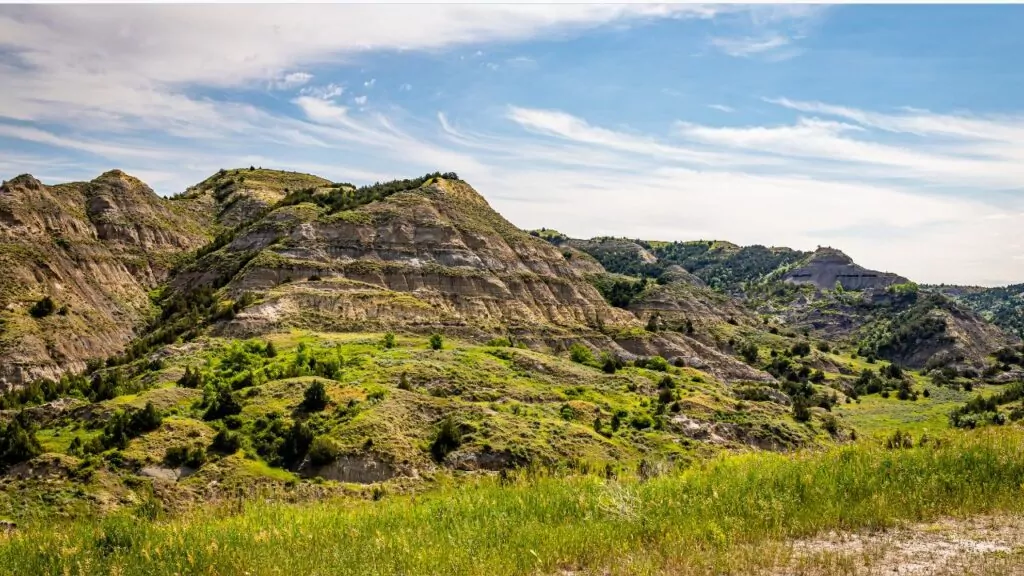
North Dakota, often overlooked by travelers, is a state of wide-open spaces, rich history, and surprising diversity. From the rugged Badlands in the west to the fertile Red River Valley in the east, North Dakota offers a unique glimpse into America’s Great Plains heritage.
Key Attractions
- Theodore Roosevelt National Park: Named after the president who once ranched in the area, this park showcases the rugged beauty of the North Dakota Badlands. Visitors can spot bison, prairie dogs, and wild horses while exploring scenic drives and hiking trails.
- Fargo: The largest city in the state and the subject of the Coen Brothers’ movie, has a thriving arts community, distinctive museums, and a charming downtown.
- International Peace Garden: Straddling the U.S.-Canada border, this 2,339-acre garden symbolizes the peaceful relationship between the two nations and features floral displays, a peace tower, and a 9/11 memorial.
- Fort Abraham Lincoln State Park: Home to On-A-Slant Indian Village and a rebuilt military fort, this park offers insights into both Native American history and the life of General George Armstrong Custer.
Natural Wonders and Outdoor Activities
North Dakota’s diverse landscape offers a range of outdoor experiences:
- Birding: The state is on a major migratory flyway, making it a prime destination for birdwatchers.
- Fishing: North Dakota has numerous lakes and rivers, including Lake Sakakawea, which provides excellent fishing opportunities.
- Hunting: The state is known for its pheasant, waterfowl, and big game hunting.
- Stargazing: The dark skies of North Dakota’s rural areas provide perfect conditions for astronomy enthusiasts.
Cultural Experiences and Local Cuisine
North Dakota’s culture is a blend of Native American heritage, pioneer history, and Scandinavian influences:
- Scandinavian Heritage Park: Located in Minot, this park celebrates the area’s Nordic heritage with a full-size replica of the Gol Stave Church.
- North Dakota Heritage Center & State Museum: This Bismarck museum offers a comprehensive look at the state’s natural and cultural history.
- Medora Musical: An outdoor musical show celebrating the Old West, performed in the Burning Hills Amphitheatre.
North Dakota’s cuisine reflects its agricultural roots and diverse cultural influences:
- Knoephla soup: A creamy potato soup with dumplings, reflecting German-Russian heritage.
- Juneberry pie: Made from a berry native to the northern plains
- Bison burgers: North Dakota is a leading producer of bison meat.
- Lefse: A Norwegian flatbread popular during holidays
Best Times to Visit and Travel Tips
- Summer (June to August) offers warm weather and long days perfect for outdoor activities.
- Fall (September to October) brings mild temperatures and beautiful foliage.
- Winter (November to March) can be harsh but offers opportunities for winter sports.
- Spring (April to May) sees the prairies come alive with wildflowers.
Travel Tips:
- A car is essential for exploring North Dakota’s vast spaces.
- Be prepared for long distances between towns, especially in western North Dakota.
- Check weather forecasts regularly, as conditions can change quickly.
Hidden Gems
- Enchanted Highway: A 32-mile stretch of road featuring massive scrap metal sculptures.
- Maah Daah Hey Trail: A 144-mile non-motorized trail through the Badlands, popular with mountain bikers and hikers.
- Fort Union Trading Post National Historic Site: A reconstructed 19th-century fur trading post on the Missouri River.
6. Idaho: The Gem State
Idaho, known for its stunning natural beauty and outdoor recreation opportunities, is a paradise for nature lovers and adventure seekers. From the rugged Sawtooth Mountains to the deep canyons of Hells Canyon, Idaho offers diverse landscapes and experiences.
Key Attractions
- Craters of the Moon National Monument and Preserve: This otherworldly landscape is a vast ocean of lava flows with scattered islands of cinder cones and sagebrush. It offers unique hiking and caving experiences.
- Boise: The state capital combines urban amenities with simple access to outdoor recreation. Visit the Boise River Greenbelt, the Idaho State Capitol, and the vibrant downtown area.
- Sawtooth National Recreation Area: Encompassing 756,000 acres, this area offers stunning mountain scenery, hundreds of alpine lakes, and over 700 miles of trails.
- Hells Canyon National Recreation Area: The deepest river gorge in North America, Hells Canyon offers whitewater rafting, fishing, and spectacular views.
Natural Wonders and Outdoor Activities
Idaho’s diverse landscape provides endless opportunities for outdoor enthusiasts:
- Skiing and Snowboarding: World-class resorts like Sun Valley offer excellent winter sports opportunities.
- Whitewater Rafting: Rivers like the Salmon and Snake offer thrilling rafting experiences.
- Hiking and Backpacking: From day hikes to multi-day wilderness treks, Idaho has trails for all skill levels.
- Hot Springs: Natural hot springs are scattered throughout the state, offering relaxing soaks in beautiful settings.
Cultural Experiences and Local Cuisine
Idaho’s culture reflects its Western heritage and outdoor lifestyle:
- Basque Culture: Boise is home to one of the largest Basque communities outside of Spain. Visit the Basque Block for cultural experiences and cuisine.
- Idaho Potato Museum: Located in Blackfoot, this quirky museum celebrates Idaho’s famous crop.
- Ernest Hemingway Memorial: Visit the author’s final resting place in Ketchum and learn about his connection to Idaho.
Idaho’s cuisine is known for its potatoes, but offers much more:
- Idaho Potato dishes: Creative uses of potatoes range from fries to ice cream.
- Huckleberries: Found in desserts, syrups, and even beer
- Trout: The state fish, often served fresh from Idaho’s rivers
- Finger steaks: battered and fried strips of beef, an Idaho invention.
Best Times to Visit and Travel Tips
- Summer (June to August) is ideal for most outdoor activities, though popular areas can be crowded.
- Fall (September to October) offers mild weather and beautiful foliage.
- Winter (December to March) is perfect for skiing and other winter sports.
- Spring (April to May) brings wildflowers but can be rainy.
Travel Tips:
- A car is necessary to explore Idaho’s diverse regions.
- Be prepared for wilderness areas with limited cell phone coverage.
- Respect wildlife and follow Leave No Trace principles when in nature.
Hidden Gems
- City of Rocks National Reserve: A paradise for rock climbers and hikers, with unique granite formations.
- Kirkham Hot Springs: A series of cascading hot pools along the Payette River.
- Sandpoint: A charming town on Lake Pend Oreille, offering beaches, skiing, and a thriving arts scene.
7. New Mexico: Land of Enchantment
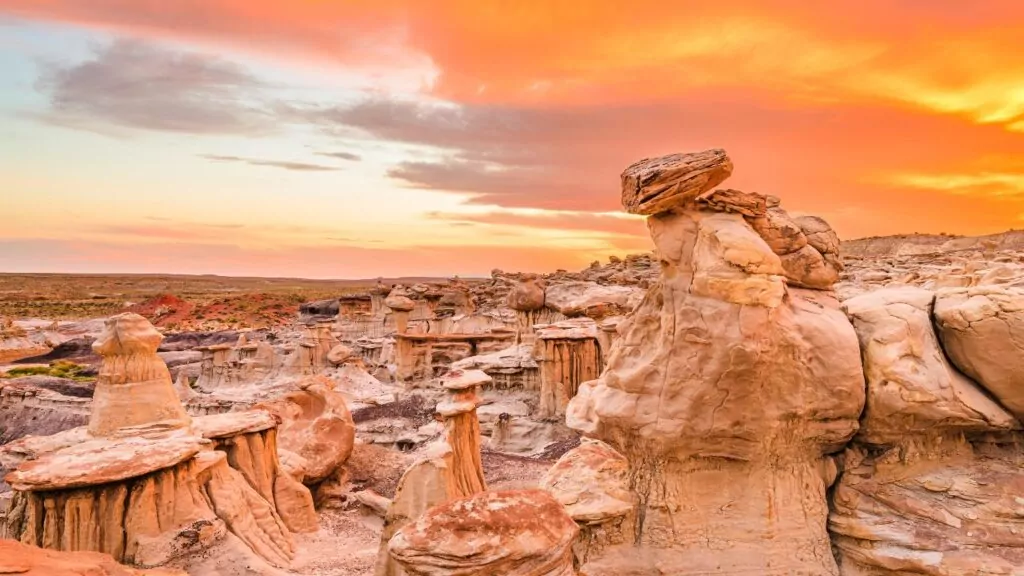
New Mexico, with its rich cultural heritage, stunning desert landscapes, and vibrant arts scene, truly lives up to its nickname, “The Land of Enchantment.” This southwestern state offers a unique blend of Native American, Hispanic, and Anglo cultures, set against a backdrop of diverse natural beauty.
Key Attractions
- Santa Fe: The state capital is known for its Pueblo-style architecture, vibrant arts scene, and historic plaza. Visit the Georgia O’Keeffe Museum and the Palace of the Governors.
- Carlsbad Caverns National Park: Explore a vast underground world of limestone caverns, including the Big Room, one of the largest natural chambers in North America.
- Taos Pueblo: Constantly inhabited for over 1,000 years, this ancient pueblo is a UNESCO World Heritage site, providing insights into Native American culture and history.
- White Sands National Park: The world’s largest gypsum dunefield, offering opportunities for hiking, sand sledding, and stargazing.
Natural Wonders and Outdoor Activities
New Mexico’s diverse landscape provides a wealth of outdoor experiences:
- Hiking: From the high peaks of the Sangre de Cristo Mountains to desert trails, New Mexico offers diverse hiking opportunities.
- Hot Air Ballooning: Albuquerque’s International Balloon Fiesta is the largest hot air balloon event in the world.
- Skiing: Taos Ski Valley and other resorts offer excellent skiing and snowboarding.
- Stargazing: Dark sky parks, such as Chaco Culture National Historical Park, provide ideal conditions for astronomy.
Cultural Experiences and Local Cuisine
New Mexico’s culture is a unique blend of Native American, Spanish, Mexican, and Anglo influences:
- Pueblo Feast Days: Many pueblos welcome visitors to their annual feast days, featuring traditional dances and cuisine.
- Santa Fe Indian Market: The world’s largest and most prestigious Native American art market, held annually in August.
- Route 66: Experience the nostalgia of the “Mother Road” through New Mexico’s stretch of Historic Route 66.
New Mexican cuisine is known for its use of chili peppers and unique flavors:
- Green Chile Cheeseburger: A New Mexico specialty
- Sopapillas: Fried pastries served with honey
- Bizcochitos: The official state cookie, flavored with anise and cinnamon
- Blue Corn dishes: Used in everything from enchiladas to pancakes
Best Times to Visit and Travel Tips
- Spring (March to May) and Fall (September to November) offer mild temperatures and are ideal for most activities.
- Summer (June to August) can be very hot, especially in lower elevations.
- Winter (December to February) is perfect for skiing but can be cold in higher elevations.
Travel Tips:
- A car is essential for exploring New Mexico’s diverse regions.
- Respect tribal lands, and always check for visitor guidelines when entering pueblos.
- Be prepared for high altitudes in certain areas, which can affect some visitors.
Hidden Gems
- Gila Cliff Dwellings National Monument: Well-preserved Mogollon Cliff dwellings in southern New Mexico.
- Meow Wolf: An immersive, interactive art experience in Santa Fe.
- Bandelier National Monument: Ancient cliff dwellings and petroglyphs near Los Alamos.
Conclusion
These seven states—Maine, Vermont, West Virginia, Kentucky, North Dakota, Idaho, and New Mexico—offer a diverse array of experiences that showcase the true breadth of America’s natural beauty, cultural heritage, and adventurous spirit. From the rugged coastlines of Maine to the enchanting deserts of New Mexico, from the rolling hills of Kentucky to the wide-open spaces of North Dakota, each state presents unique opportunities for exploration and discovery.
Prepare to discover the hidden wonders of Maine, Vermont, West Virginia, Kentucky, North Dakota, Idaho, and New Mexico. Your next fantastic American adventure awaits in these lesser-known, but utterly captivating, corners of the country.

